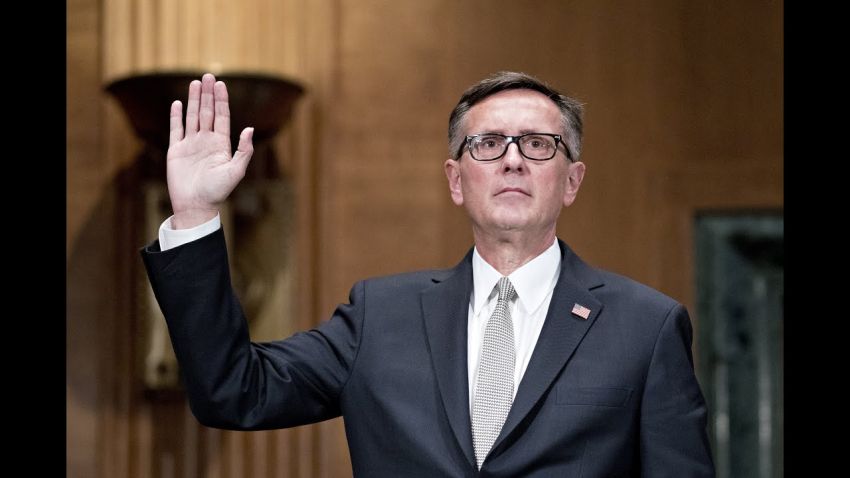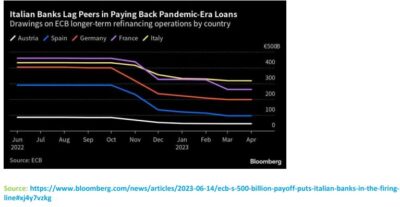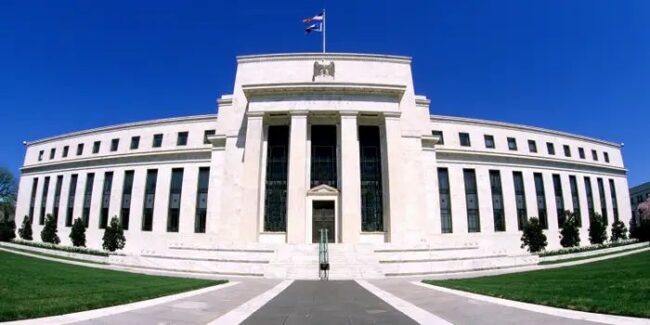Vice Chair Richard H. Clarida
Outlooks and Outcomes for the U.S. Economy
The U.S. economy in the second quarter of this year made the transition from economic recovery to economic expansion.1 Given the catastrophic collapse in U.S. economic activity in the first half of 2020 as a result of the global pandemic and the mitigation efforts put in place to contain it, few forecasters could have expected—or even dared to hope—in the spring of last year that the recovery in gross domestic product (GDP), from the sharpest decline in activity since the Great Depression, would be either so robust or as rapid. In retrospect, it seems clear that timely and targeted monetary and fiscal policy actions—unprecedented in both scale and scope—provided essential and significant support to the economic recovery as it got under way last year. Indeed, the National Bureau of Economic Research’s Business Cycle Dating Committee determined in July that the recession that began in March of last year ended in April, making it not only the deepest recession on record, but also the briefest.2 The recovery that commenced in the summer of 2020 was quite robust, and, with one quarter to go, GDP growth in 2021 is projected by the Fed and many outside forecasters to be the fastest since 1983. However, it must be noted that the course of the economy this year and beyond will depend on the course of this virus. That said, under the median projection for GDP growth in the September Summary of Economic projections, the level of real GDP will have returned to its pre pandemic trend growth trajectory by the fourth quarter of 2021, which if realized would represent one of the most rapid such recoveries in 50 years.3
In the September SEP round, my individual projections for GDP growth, the unemployment rate, inflation, and the policy rate path turned out to be quite close to the path of SEP medians for each of these variables over the 2021–24 projection window. Under these projections, GDP growth steps down from 5.9 percent this year to 3.8 percent in 2022 and further to 2.5 percent and 2 percent in 2023 and 2024, respectively. Not surprisingly, the projected path of above-trend GDP growth in 2021 and 2022 translates into rapid declines in the projected path for the unemployment rate, which is projected to fall to 3.8 percent by the end of 2022 and 3.5 percent by the end of 2023. This modal projection for the path of the unemployment rate is, according to the Atlanta Fed jobs calculator, consistent with a rebound in labor force participation to its estimated demographic trend and is also consistent with cumulative employment gains this year and next that, by the end of 2022, eliminate the 4.2 million „employment gap” relative to the previous cycle peak.4
My projections for headline and core PCE (personal consumption expenditures) inflation are, alas, also similar to the median SEP numbers. Under the projected SEP path for inflation, core PCE inflation surges to at least 3.7 percent this year before reverting back to 2.3 percent in 2022, 2.2 percent in 2023, and 2.1 percent in 2024. Thus, the baseline outlook for inflation over the three-year projection window reflects the judgment, shared with many outside forecasters, that under appropriate monetary policy, most of the inflation overshoot relative to the longer-run goal of 2 percent will, in the end, prove to be transitory. But as I have noted before, there is no doubt that it is taking much longer to fully reopen a $20 trillion economy than it did to shut it down. Although in a number of sectors of the economy the imbalances between demand and supply—including labor supply—are substantial, I do continue to judge that these imbalances are likely to dissipate over time as the labor market and global supply chains eventually adjust and, importantly, do so without putting persistent upward pressure on price inflation and wage gains adjusted for productivity. But let me be clear on two points. First, realized PCE inflation so far this year represents, to me, much more than a „moderate” overshoot of our 2 percent longer-run inflation objective, and I would not consider a repeat performance next year a policy success. Second, as always, there are risks to any outlook, and I and 12 of my colleagues believe that the risks to the outlook for inflation are to the upside.
Prospects for U.S. Monetary Policy
In September 2020, the FOMC introduced—and since then has reaffirmed—outcome-based, threshold guidance that specifies three conditions that the Committee expects will be met before it considers increasing the target range for the federal funds rate, currently 0 to 25 basis points.5 This guidance in September of last year brought the forward guidance on the federal funds rate in the statement into alignment with the new flexible average inflation targeting framework adopted in August 2020.6 To quote from the statement, these conditions are that „labor market conditions have reached levels consistent with the Committee’s assessments of maximum employment and inflation has risen to 2 percent and is on track to moderately exceed 2 percent for some time.”
While we are clearly a ways away from considering raising interest rates, if the outlooks for inflation and unemployment I summarized a moment ago turn out to be the actual outcomes realized over the forecast horizon, then I believe that these three necessary conditions for raising the target range for the federal funds rate will have been met by year-end 2022.7 Core PCE inflation since February 2020—a calculation window that smooths out any base effects resulting from „round trip” declines and rebounds in the price levels of COVID-19-sensitive sectors and, coincidentally, also measures the average rate of core PCE inflation since hitting the effective lower bound (ELB) in March 2020—is running at 2.8 percent through September 2021 and is projected to remain moderately above 2 percent in all three years of the projection window. Moreover, my inflation projections for 2023 and 2024, which forecast inflation rates similar to the SEP medians, would by year-end 2022, to me, satisfy the „on track to moderately exceed 2 percent for some time” threshold specified in the statement. Finally, while my assessment of maximum employment incorporates a wide range of indicators to assess the state of the labor market—including indicators of labor compensation, productivity, and price-cost markups—the employment data I look at, such as the Kansas City Fed’s Labor Market Conditions Indicators, are historically highly correlated with the unemployment rate.8 My expectation today is that the labor market by the end of 2022 will have reached my assessment of maximum employment if the unemployment rate has declined by then to the SEP median of modal projections of 3.8 percent.
Given this economic outlook and so long as inflation expectations remain well anchored at the 2 percent longer-run goal—which, based on the Fed staff’s common inflation expectations (CIE) index, I judge at present to be the case—a policy normalization path similar to the median SEP dot plot on page 4 of our September 2021 projections would, under these conditions, be entirely consistent, to me, with our new flexible average inflation targeting framework and the policy rate reaction function I discussed in remarks here at Brookings in November 2020.9 In the context of our new framework, it is important to note that while the ELB can be a constraint on monetary policy, the ELB is not a constraint on fiscal policy, and appropriate monetary policy under our new framework, to me, must—and certainly can—incorporate this reality. Indeed, under present circumstances, I judge that the support to aggregate demand from fiscal policy—including the roughly $2 trillion in accumulated excess savings accruing from (as yet) unspent transfer payments—in tandem with appropriate monetary policy, can fully offset the constraint, highlighted in our Statement on Longer-Run Goals and Monetary Policy Strategy, that the ELB imposes on the ability of inflation-targeting monetary policy, acting on its own and in the absence of sufficient fiscal support, to restore, following a recession, maximum employment and price stability while keeping inflation expectations well anchored at the 2 percent longer-run goal.10
Before I conclude, let me say a few words about our Treasury and mortgage-backed securities (MBS) purchase programs. In our December 2020 FOMC statement, we indicated that we would maintain the pace of Treasury and MBS purchases at $80 billion and $40 billion per month, respectively, until „substantial further progress” has been made toward our maximum-employment and price-stability goals. Since then, the economy has made progress toward these goals. At our meeting last week, the Committee decided to begin reducing the monthly pace of its net asset purchases by $10 billion for Treasury securities and $5 billion for agency mortgage-backed securities. Beginning later this month, the Committee will increase its holdings of Treasury securities by at least $70 billion per month and of agency mortgage‑backed securities by at least $35 billion per month. Beginning in December, the Committee will increase its holdings of Treasury securities by at least $60 billion per month and of agency mortgage-backed securities by at least $30 billion per month. The Committee judges that similar reductions in the pace of net asset purchases will likely be appropriate each month, but it is prepared to adjust the pace of purchases if warranted by changes in the economic outlook. The Federal Reserve’s ongoing purchases and holdings of securities will continue to foster smooth market functioning and accommodative financial conditions, thereby supporting the flow of credit to households and businesses.
Thank you very much for your time and attention. I look forward to the conversation with Ben Bernanke, Philip Lane, and Rachana Shanbhogue.
References
Ahn, Hie Joo, and Chad Fulton (2020). „Index of Common Inflation Expectations,” FEDS Notes. Washington: Board of Governors of the Federal Reserve System, September 2.
——— (2021). „Research Data Series: Index of Common Inflation Expectations,” FEDS Notes. Washington: Board of Governors of the Federal Reserve System, March 5.
Christiano, Lawrence, Martin Eichenbaum, and Sergio Rebelo (2011). „When Is the Government Spending Multiplier Large?” Journal of Political Economy, vol. 119 (February), pp. 78–121.
Clarida, Richard H. (2020). „The Federal Reserve’s New Framework: Context and Consequences,” speech delivered at „The Economy and Monetary Policy,” an event hosted by the Hutchins Center on Fiscal and Monetary Policy at the Brookings Institution, Washington (via webcast), November 16.
——— (2021). „The Federal Reserve’s New Framework and Outcome-Based Forward Guidance,” speech delivered at „SOMC: The Federal Reserve’s New Policy Framework,” a forum sponsored by the Manhattan Institute’s Shadow Open Market Committee, New York (via webcast), April 14.
Eggertsson, Gauti B. (2011). „What Fiscal Policy Is Effective at Zero Interest Rates?” in Daron Acemoglu and Michael Woodford, eds., NBER Macroeconomics Annual 2010, vol. 25 (Chicago: University of Chicago Press), pp. 59–112.
National Bureau of Economic Research, Business Cycle Dating Committee (2021). „Determination of the April 2020 Trough in US Economic Activity,” announcement, July 19.
Powell, Jerome H. (2020). „New Economic Challenges and the Fed’s Monetary Policy Review,” speech delivered at „Navigating the Decade Ahead: Implications for Monetary Policy,” a symposium sponsored by the Federal Reserve Bank of Kansas City, held in Jackson Hole, Wyo., August 27.
Woodford, Michael (2011). „Simple Analytics of the Government Expenditure Multiplier,” American Economic Journal: Macroeconomics, vol 3 (January), pp. 1–35.
Woodford, Michael, and Yinxi Xie (2020). „Fiscal and Monetary Stabilization Policy at the Zero Lower Bound: Consequences of Limited Foresight,” NBER Working Paper Series 27521. Cambridge, Mass.: National Bureau of Economic Research, July.
1. The views expressed are my own and not necessarily those of other Federal Reserve Board members or Federal Open Market Committee participants. I would like to thank Burcu Duygan-Bump and Chiara Scotti for assistance in preparing these remarks. Return to text
2. See National Bureau of Economic Research (2021). Return to text
3. The most recent SEP, released following the conclusion of the September 2021 FOMC meeting, is available on the Board’s website at https://www.federalreserve.gov/monetarypolicy/fomccalendars.htm. Return to text
4. More information on the jobs calculator can be found on the Atlanta Fed’s website at https://www.atlantafed.org/chcs/calculator. Return to text
5. The FOMC statements containing the guidance (see the fourth paragraph in each statement) are available on the Board’s website at https://www.federalreserve.gov/monetarypolicy/fomccalendars.htm. Return to text
6. The revised Statement on Longer-Run Goals and Monetary Policy Strategy, unanimously approved on August 27, 2020, is available on the Board’s website at https://www.federalreserve.gov/monetarypolicy/review-of-monetary-policy-strategy-tools-and-communications-statement-on-longer-run-goals-monetary-policy-strategy.htm. For a discussion of the elements that motivated the launch of the review and a summary of the key changes that were introduced, see Clarida (2020, 2021) and Powell (2020). Return to text
7. Of course, data for December 2022 employment and 2022:Q4 GDP and PCE inflation will not be released until January 2023. Return to text
8. The Labor Market Conditions Indicators can be found on the Kansas City Fed’s website at https://www.kansascityfed.org/data-and-trends/labor-market-conditions-indicators. Return to text
9. The Fed staff’s CIE index—which is now updated quarterly on the Board’s website—is a relevant indicator that this goal is being met. See Ahn and Fulton (2020, 2021). Return to text
10. For a theoretical analysis of the fiscal and monetary policy mix at the ELB, see Woodford and Xie (2020). For studies of the government expenditure multiplier at the ELB, see Woodford (2011); Christiano, Eichenbaum, and Rebelo (2011); and Eggertsson (2011)






COMMENTS